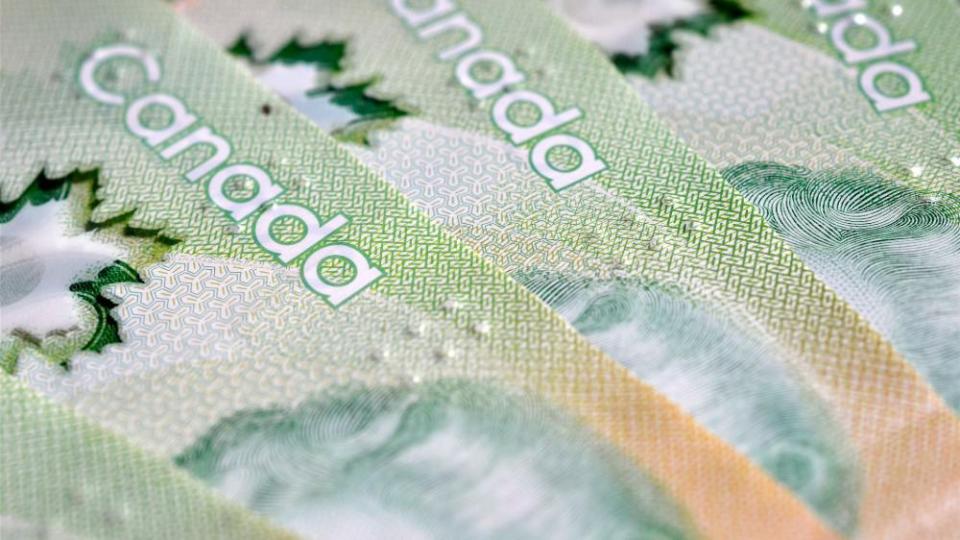CERB Cuts: 2 Dividend Stocks to Supplement Shrinking CRA Payments

The Canada Emergency Response Benefit (CERB) has been a lifeline for many vulnerable Canadians. You’ve probably heard that ad nauseam of late. While CERB extensions are in the cards for many who’ve yet to return to work after the insidious coronavirus wreaked havoc on the world economy, some folks have been receiving smaller CERB payments this June. And many more are likely to see their monthly CERB payments come up short of the $2,000 amount that many eligible Canadians have grown accustomed to over the last several months.
CERB cuts could prove to be too deep for many out-of-work Canadians
The CRA payment isn’t going to last forever, and depending on your unique circumstances, the full $2000/month amount may not last either, even if CERB payments are to be expected even further. The price tag associated with the CERB is steep, as I’ve mentioned in prior pieces.
With a second wave of COVID-19 potentially on the horizon, shrinking CERB payments may soon become the norm. For many, sub-$1,000 CERB payments are simply not enough to meet the lofty costs of living. While eviction bans and all the sort could provide some relief for renters, the fact remains that many vulnerable Canadians will continue to remain in a profoundly insecure financial predicament over the coming weeks and months.
Canadians need more financial security and an additional supplement to their monthly income. That’s why it’s vital for savers, especially those with sizeable Tax-Free Savings Accounts (TFSAs), to invest their money in income-producing securities, so they can boost their monthly income without running the risk of running out of money.
Following the coronavirus crash, there remain plenty of opportunities for income investors to pay less to get more yield. With a careful analysis of a firm’s financial situation and operating impact from COVID-19, one can lock in a greater yield without running into a situation that’d result in a dividend cut.
Consider picking up shares of BCE (TSX:BCE)(NYSE:BCE) and H&R REIT (TSX:HR.UN) for sustainable income to supplement your CRA payments like the CERB.
BCE
BCE used to be a dividend darling that rewarded investors with substantial capital gains alongside a bountiful dividend yield and above-average dividend growth. Today, Canadian telecoms aren’t the same as they used to be amid rising competition and pressure from the Feds to lower prices. You’re not going to have your cake (a huge, safe yield) and eat it too (substantial low-beta capital gains) from a behemoth like BCE.
It’s lacking in growth and is an easy pass for young investors in a bull market. In a coronavirus-plagued recessionary environment, though, BCE is well worth the price of admission. What the company lacks in growth, it makes up for in the security and magnitude of its dividend, which are traits that CERB users desire right now amid shrinking CRA payments and uncertainties regarding their ability to return to work anytime soon.
BCE sports a 6% yield. The dividend isn’t going anywhere, even if worse comes to worst with this pandemic. If you’re looking for a tax-free income supplement (made possible with your TFSA), the telecom kingpin ought to be at the top of your shopping list.
H&R REIT
H&R REIT is a 7.2%-yielding Canadian REIT that’s heavily weighted in the office and retail real estate sub-industries. Yes, I know, the REIT gives you a front-row seat to the names most plagued by COVID-19. Many folks believe that retail malls and offices are on their way out.
While office and retail properties may seem like they’re destined for the fate of the dodo bird, I’d consider contrarian CERB-using TFSA investors to consider the upside thesis as they consider taking the role of contrarian with one of the most battered REITs on the entire TSX.
The contrarian thesis on a name like H&R is that humans are social creatures, and once the pandemic ends, people’s behaviours will revert toward pre-pandemic means. Once everybody’s vaccinated and it’s safe to go out to the mall or the office, it’s likely we’ll be back to those pre-pandemic norms. Moreover, H&R is severely undervalued at under $10 and is a great income play given the REIT has already ripped the band-aid off, having already cut its dividend.
The post CERB Cuts: 2 Dividend Stocks to Supplement Shrinking CRA Payments appeared first on The Motley Fool Canada.
More reading
CRA Update: a Brand-New $500 Tax Break You Can Claim in 2020!
Air Canada (TSX:AC) Stock Owners: Mark This Thursday on Your Calendar!
Fool contributor Joey Frenette has no position in any of the stocks mentioned.
The Motley Fool’s purpose is to help the world invest, better. Click here now for your free subscription to Take Stock, The Motley Fool Canada’s free investing newsletter. Packed with stock ideas and investing advice, it is essential reading for anyone looking to build and grow their wealth in the years ahead. Motley Fool Canada 2020

 Yahoo Finance
Yahoo Finance 